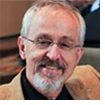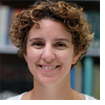Misconceptions – A Wonderful Way to Motivate STEM Learning
 1. I’m holding a dried piece of wood in my hand, about 2 km in weight. What fraction of these 2 km came up through the ground, through the roots of the tree that was home to this piece of wood? I’d say about 40%. 1. I’m holding a dried piece of wood in my hand, about 2 km in weight. What fraction of these 2 km came up through the ground, through the roots of the tree that was home to this piece of wood? I’d say about 40%.
2. I’m teaching my daughter to ride a 2-wheel bicycle. After a couple of failed practice runs, with my helping hand on the bicycle seat for stabilization, she gains speed and balance and she is off on her own! This is so great; her new speed gave rise to increased angular momentum in the wheels and has stabilized her, kind of like a gyroscope.
3. I love my friends on Facebook. They are all so social. And each has almost as many friends as I do! Read more.
Green Chemistry: Teaching for a Sustainable Future
 Chemistry, the study of matter, has improved our quality of life and made thousands of products possible. Unfortunately, this achievement has come at a price: human health and the environment have been impacted by the unintended consequences of traditional chemistry. We are well aware of many environmental problems facing the planet, but why do we have these problems and what is being done to create a more sustainable world? Chemistry, the study of matter, has improved our quality of life and made thousands of products possible. Unfortunately, this achievement has come at a price: human health and the environment have been impacted by the unintended consequences of traditional chemistry. We are well aware of many environmental problems facing the planet, but why do we have these problems and what is being done to create a more sustainable world?
Green chemistry is the science of creating safe, energy efficient, and non-toxic processes and products that provide sustainable solutions for the environmental problems facing our society today. Read more. |
 |
Analyzing Authentic Data in a New Biostatistics Course for High School Students
 Two years ago as colleagues in the math department at Concord Carlisle High School, we discovered that we shared a common interest in the field of Biostatistics. We have complementary strengths. Sara has a background in statistics, economics, applied mathematics and technology. Sandra has a background in science, math, environmental law, and public policy. Drawing on our respective backgrounds, we created an interdisciplinary, unleveled course focusing on three major areas within Biostatistics: Public Health and Epidemiology, Bioinformatics and Biodiversity. Unaware of any other high school Biostatistics courses and without a textbook, we contacted researchers in academia and industry to get authentic data sets for our students to analyze. Read more. Two years ago as colleagues in the math department at Concord Carlisle High School, we discovered that we shared a common interest in the field of Biostatistics. We have complementary strengths. Sara has a background in statistics, economics, applied mathematics and technology. Sandra has a background in science, math, environmental law, and public policy. Drawing on our respective backgrounds, we created an interdisciplinary, unleveled course focusing on three major areas within Biostatistics: Public Health and Epidemiology, Bioinformatics and Biodiversity. Unaware of any other high school Biostatistics courses and without a textbook, we contacted researchers in academia and industry to get authentic data sets for our students to analyze. Read more.
Federal Focus on STEM Improves with Passage of ESSA
 On Thursday, December 10, President Obama signed the long overdue reauthorization of the Elementary and Secondary Education Act (ESEA). Created in 1965, this statute funds public primary and secondary education, and emphasizes that all students have access to education. Among its many sections, what and how STEM programs can be funded by state and local education agencies are included. On Thursday, December 10, President Obama signed the long overdue reauthorization of the Elementary and Secondary Education Act (ESEA). Created in 1965, this statute funds public primary and secondary education, and emphasizes that all students have access to education. Among its many sections, what and how STEM programs can be funded by state and local education agencies are included.
Typically, the government reauthorized ESEA every 5 years since 1965 without much change. That is, until 2001 when the reauthorization of ESEA underwent an extensive overhaul; commonly called the No Child Left Behind Act of 2001 or NCLB. Read more. |